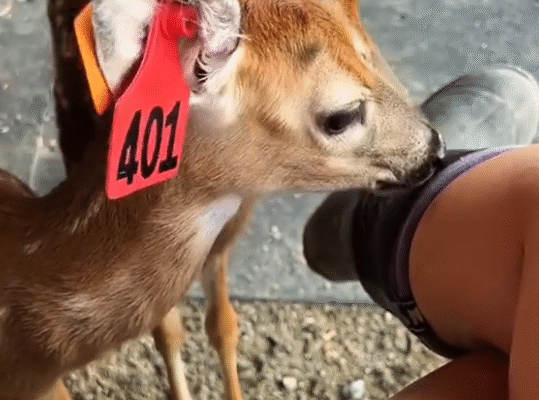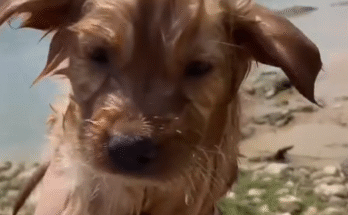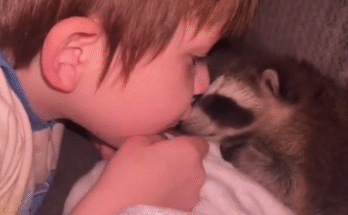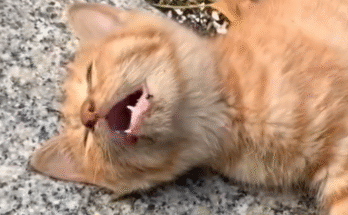It was supposed to be just another lazy Sunday drive. The air was warm, the trees were painted in early summer green, and the winding country road ahead promised a quiet escape from the bustle of town life. My partner, Lena, and I were looking for a scenic route to relax and maybe find a quiet spot for a picnic. But what we found instead turned our afternoon into something unforgettable.
About fifteen miles out of town, the road curved sharply past a dense thicket of woods. As we rounded the bend, Lena suddenly gasped.
“Stop the car!” she shouted.
I slammed on the brakes, heart jumping into my throat. Right in the middle of the road, barely visible against the dappled sunlight, were two small, trembling figures — baby deer. Fawns. No bigger than a medium-sized dog, they stood frozen, their legs wobbling and heads lowered as if unsure what to do.
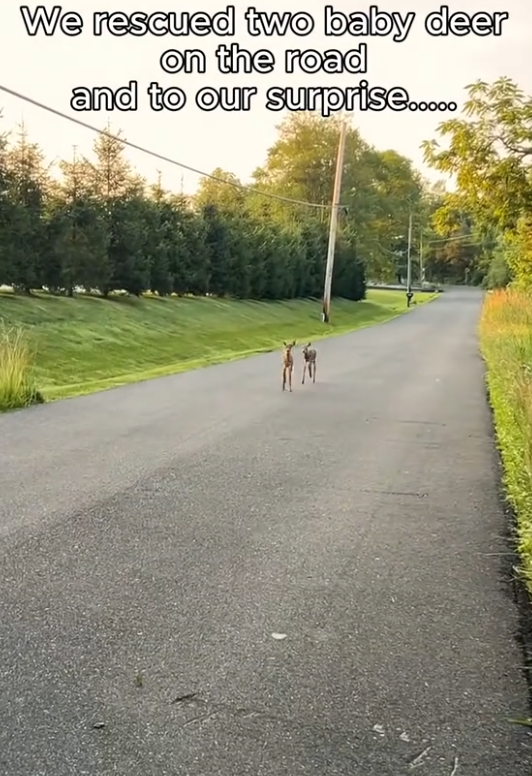
A Heart-Stopping Moment
We sat in stunned silence for a moment. The road was empty, but it was still a dangerous place for something so defenseless. Their mother was nowhere in sight. One fawn tried to move but stumbled, collapsing on the asphalt with a small, frightened bleat. The other stood over it protectively, but didn’t run.
That’s when I knew — they needed help.
I pulled over, turned on the hazard lights, and carefully stepped out of the car. Lena followed, her hands already outstretched with calm, slow movements.
“Don’t scare them,” she whispered.
We approached cautiously. The closer we got, the more heartbreaking the scene became. The fawns were clearly too young to be alone — no spots faded yet, and one of them had a scratch on its leg that looked fresh. Maybe they had wandered onto the road by accident. Or maybe… something had happened to their mother.
The Rescue
With the gentlest touch, we managed to coax the uninjured fawn into a blanket Lena kept in the car. The other one, the weaker one, didn’t resist being lifted. I held my breath as I cradled it — light as a feather, its heartbeat thumping wildly against my chest. It looked up at me with wide, wet eyes. I couldn’t tell if it was fear or trust that kept it calm.
We placed them gently in the back of our SUV, nestled in the blankets and cushioned by extra clothes. Then the question hit us — what now?
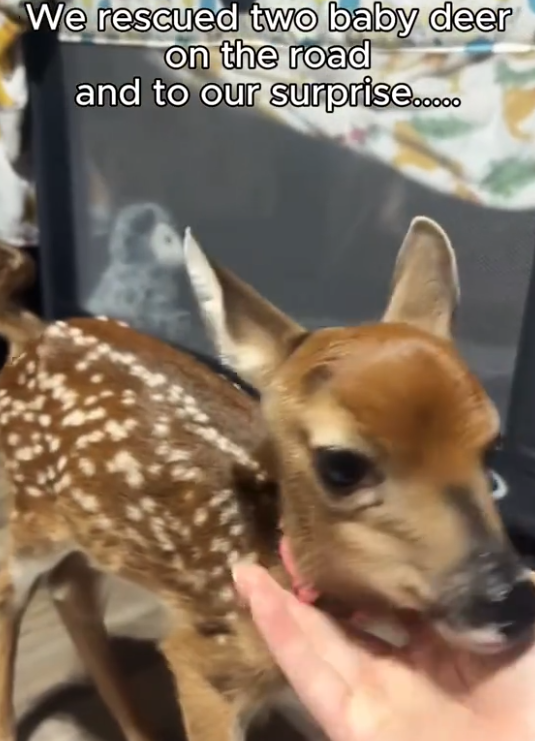
Finding Help
We couldn’t take care of wild animals ourselves, and leaving them was out of the question. Lena quickly looked up the number for a nearby wildlife rehabilitation center — about 40 minutes away. I called and explained the situation.
“They’re fawns? Alone? Injured?” the woman on the phone repeated. “Bring them here right away. And don’t try to feed them or give them water yet.”
As I drove, Lena kept checking on the deer in the back. The injured one had closed its eyes but was still breathing. The other stared at us the whole ride, as if trying to understand what was happening.
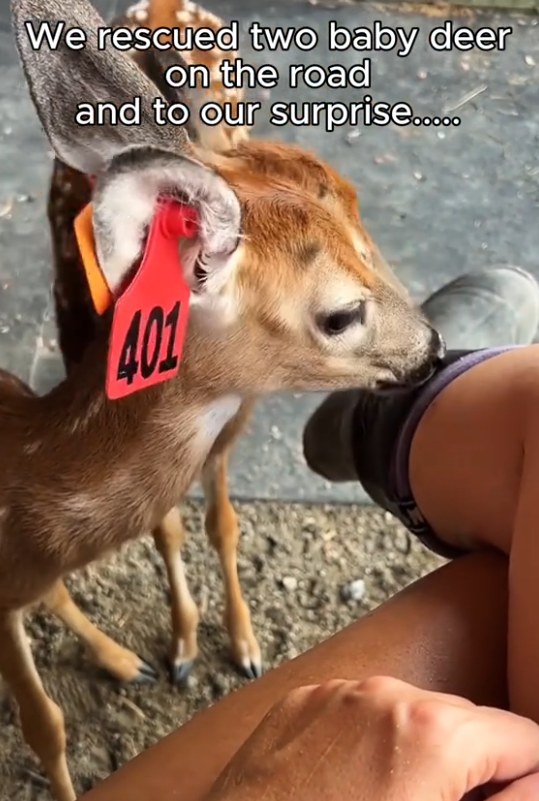
To Our Surprise…
When we arrived at the wildlife center, the staff took over quickly. One of them, a woman named Teresa, examined the fawns and gave us a strange look.
“You’re not going to believe this,” she said. “These aren’t just random fawns. We know them.”
We blinked at her, confused.
“Three days ago,” Teresa explained, “we took in a doe that had been hit by a car just a few miles from where you found these two. She was pregnant when she arrived, and delivered one stillborn fawn and two healthy ones shortly after. But she died from internal injuries the next day.”
Lena and I went quiet.
“These must be her babies,” she continued. “They somehow wandered off the center’s property. We had no idea they’d made it that far. We thought they were lost.”
It was hard to believe. The odds of us stumbling upon those exact fawns — the orphans of a deer they had tried so hard to save — were so slim. Yet here they were, reunited with the very place that could give them a second chance.
A New Beginning
Over the next few weeks, we checked in on the fawns, whom the staff had affectionately named Maple and Fern. The injured one, Fern, had a slight limp from her leg wound but was otherwise healing well. Maple, the stronger of the two, never left her sister’s side.
The center kept us updated with pictures and progress reports. The goal was to raise them until they were old enough and strong enough to be released back into the wild — somewhere safe, far from busy roads.
We even visited a few times, and each time we were amazed at how much they’d grown. Their spots began to fade, their legs grew steadier, and their curiosity returned. They no longer flinched when we approached the enclosure. Sometimes, they even ran to greet us, recognizing our voices.
Lessons We Didn’t Expect
Rescuing those fawns changed something in both Lena and me. It made us more aware of how fragile wildlife is — and how often human development puts them at risk. That day was supposed to be about escape and relaxation. Instead, it reminded us of responsibility, connection, and the profound impact of even the smallest act of compassion.
We didn’t save the world that afternoon, but we saved two lives. And to our surprise, those two baby deer gave us a purpose we didn’t know we needed.
The Farewell
A few months later, the call came. Maple and Fern were ready for release. The center invited us to be there. On a quiet morning, we gathered with the staff near a peaceful wooded clearing. The gates opened, and the young deer stepped out, hesitant but free.
They looked back only once before bounding into the trees, disappearing into their natural world — where they belonged.
The Road Less Traveled
We still take that same country road sometimes. Every time we pass that bend where we first saw them, we slow down, remembering that day. The rescue. The surprise. The unlikely reunion that fate seemed to write.
We rescued two baby deer on the road… and to our surprise, they were already part of a bigger story — one we were meant to finish.
